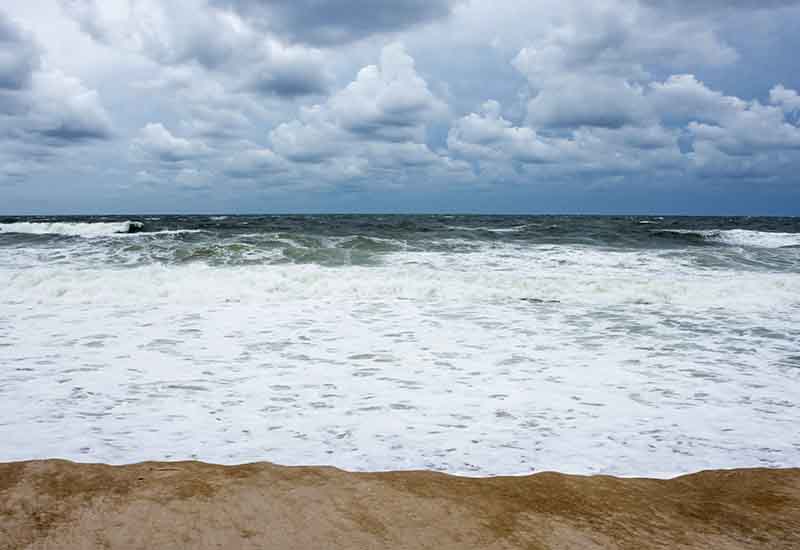TOMS RIVER, NJ – Toms River Police Department has issued warnings of high surf and dangerous rip currents along the coast as Hurricane Lee approaches.
Lee is expected miss New Jersey as is passes by offshore on its way toward New England.
The department took to social media to advise the public to exercise caution and avoid swimming in areas where no lifeguards are present.
When it comes to ocean safety, rip currents often top the list of concerns for lifeguards and water safety experts. These powerful channels of water can pull even experienced swimmers out to sea in a matter of seconds. Coupled with rough waters, the risks become even more severe. Understanding how to identify rip currents and why rough waters are dangerous is crucial for ensuring your safety at the beach.
How to Identify Rip Currents
- Look for Color Differences: Rip currents often appear darker than the surrounding water because they are deeper. The deeper water absorbs more light, making it look darker.
- Observe Wave Patterns: In areas where waves break less consistently or not at all, rip currents are more likely to form.
- Watch for Foam and Debris: Rip currents often carry sand, seaweed, and foam away from the shore. If you see a concentrated path of these elements moving seaward, it could be a rip current.
- Check for Water Movement: The speed of the current can also indicate a rip current. If you see a concentrated flow of water moving away from the shore, it’s a strong sign of a rip current.
Why Rough Waters Increase the Risk
- Stronger Currents: Turbulent weather conditions often lead to stronger currents, including rip currents, making it more challenging for even experienced swimmers to maintain control.
- Reduced Visibility: Rough waters stir up sand and debris, which can reduce visibility and make it difficult to identify hazards like rocks or other submerged objects.
- Increased Energy Exertion: The physical effort required to swim in rough waters is significantly higher, leading to quicker fatigue and an increased risk of drowning.
- Unpredictable Waves: Choppy waters can produce irregular waves that can catch swimmers off guard, making it harder to return to shore safely.
Precautions to Take
- Heed Official Warnings: Always pay attention to weather forecasts, beach flags, and warnings from lifeguards or local authorities.
- Swim Near Lifeguards: If you choose to go in the water, make sure it’s an area monitored by lifeguards.
- Use the Buddy System: Never swim alone, especially in unfamiliar or rough waters.
- Learn Basic Water Safety: Knowing how to float, tread water, and signal for help can be life-saving skills in an emergency situation.
By learning to recognize the signs of rip currents and understanding the additional risks posed by rough waters, you can make more informed decisions that prioritize safety while enjoying the ocean.

